Recent Updates
02/18/2024 12:00 PM
Fiat 500 Hybrid
02/18/2024 12:00 PM
How the Czinger 21C will change car manufacturing for good
02/17/2024 12:00 PM
Inside Meyers Manx: the most fun car company in the world?
02/17/2024 12:00 PM
Will phone payments make car park machines obsolete?
02/17/2024 12:00 AM
Volvo XC40
02/17/2024 12:00 AM
Best cars for £15,000 and under
02/16/2024 12:00 AM
JLR slows electric car blitz but boosts PHEV output
02/16/2024 12:00 AM
Peugeot 3008
02/15/2024 12:00 PM
Ex-JLR design boss Massimo Frascella replaces Marc Lichte at Audi
02/15/2024 12:00 AM
Official: Lancia Ypsilon reborn as EV supermini with 250-mile range
EV, Hybrid, Hydrogen, Solar & more 21st century mobility!
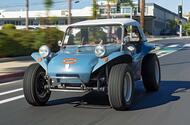
Meyers’ Manx hits 60 this year but its maker is looking to the futureThe "Switzerland of car companies" turns 60 this year - we visit its headquarters as it prepares its first EV
You might not know the Meyers Manx name, but you definitely know its shape.
This is the original beach buggy: designed in the 1960s as a no-frills, Beetle-based hobby car that could be assembled cheaply at home. It is, if you like, America’s take on the Caterham.
It’s the brainchild of the legendary Bruce Meyers, who completed his first car in 1964 and was 94 when he and wife Winnie finally retired in 2020, and continued to contribute to its story until he died a year later.
“We got some time with him before he passed, which was great,†says Michael Potiker, a partner at Trousdale Ventures – the venture capital firm “that’s basically incubating Meyers Manxâ€, having acquired it from Bruce in 2020.
“He wasn’t ill when we did the deal. It wasn’t something we needed to get done because he was going to pass away. It seemed like he was going to live forever. He had that vibe to him,†says Potiker.
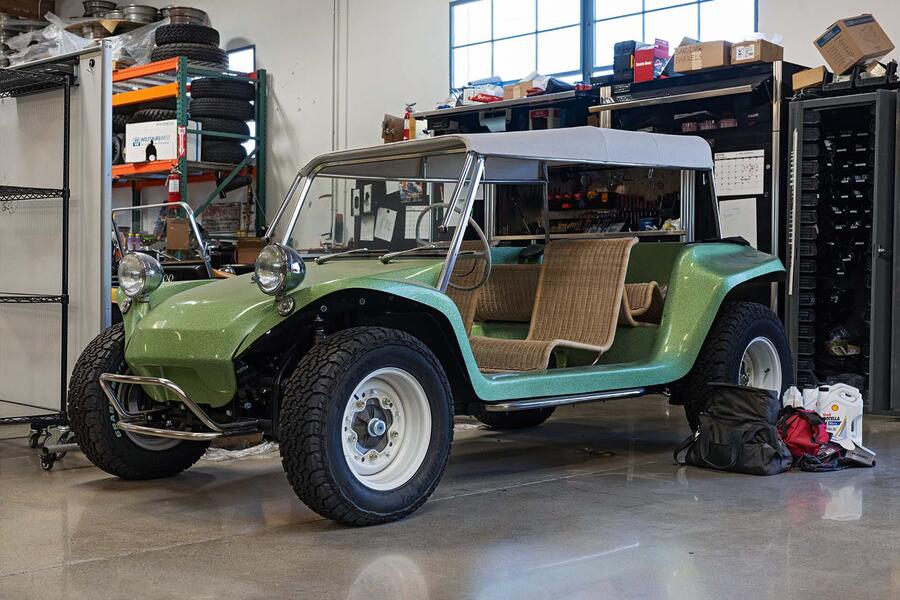
Meyers’ original company, BF Meyers & Co, was actually a relatively short-lived business, folding in 1971 after just seven years due to financial issues.
He resurrected the name in 2000 when he founded Meyers Manx Inc and restarted production of his Beetle-based creations, adding the longer-wheelbase Manxter 2+2 and Dualsport, and the new-look (well, newer) Manx Kick-out, building the company’s profile over the next two decades and establishing a community of loyal customers and fans.
Potiker says Trousdale founder – and now Meyers chairman – Phillip Sarofim “grew up driving Manx buggies and always had an affinity for themâ€.
When Potiker had his first go, he was quickly sold on the Manx’s broad appeal, which transcends social class and has become almost as recognisable and beloved as the Beetle on which it is based.
He says: “When I drove the car around downtown San Diego, I was getting thumbs up from everybody on the street, and then I took it to an upscale area and it was the same thumbs up. It’s a classless car.â€
So too, he says, is new CEO Freeman Thomas – who grew up in the California beach scene – “enamoured with the whole dune buggy thingâ€. Thomas joined Meyers off the back of four decades as a prolific car designer and is best known for his contributions to the Audi TT, Chrysler 300 and revived Dodge Charger.

Appropriately, though, he also worked alongside J Mays to reinvent the Volkswagen Beetle in the 1990s and he created the buggy-style Treo concept to showcase Jeep’s vision of “the ultimate student car†in 2003.
Retro, compact off-roaders, then, should be well within his wheelhouse – and that’s reassuring because little old Meyers must now confront the looming inevitability that is modernity.
After six decades of screwing its trademark glassfibre shells to Beetle floorpans and sending them out the door, armed with four cylinders of rattly air-cooled fury, the formula must change.
Because while Meyers’ new owners strive to preserve its old-school ethos, working practices and loyal customer base by “remastering and stabilising the kit car businessâ€, Trousdale is also committed to “bringing the brand into the futureâ€, which means electrification beckons.

And so to the Meyers Manx 2.0 EV, a completely new take on the formula: familiar in its conception but new in every tangible respect.
Bosses remain tight-lipped on where the batteries and motors come from but claim outputs of around 200bhp and 200lb ft, a range of up to 300 miles from the biggest-battery variant and, most notably, a kerb weight of around 1650kg – heavy, sure, but not inhibitively so, and testament to the work the company has done to preserve the characteristics of the original car.
Potiker says the priority for designer Thomas “was to keep the spirit and the dimensionality of the classic Manx†even as it becomes a radically different technical proposition. “There have been other attempts at beach buggies that have been bigger that are just not successful,†he said, “due to the scale being too big.â€

When we visit, the electric Manx on display at the company’s Orange Beach HQ – home of the legacy combustion business – is the Resorter, a similarly conceived but more ‘neighbourhood’-focused proposition with a limited top speed of 25mph, which means it is effectively a quadricycle, like the Citroën Ami.
It costs $49,000 (£38,400), compared with the full-fat 2.0’s $74,000 (£58,000), and is marketed as a style-focused (and well-appointed) equivalent to golf buggies and the like.
Generally, loyalists don’t take too kindly to their beloved automotive icons being resurrected with EV power, bemoaning (among other things) the charisma deficit that results from swapping a living, breathing combustion motor for whirring EV componentry, and the associated hikes in cost, weight and range anxiety that come with it.
But these concerns don’t really apply to the Manx EV because, as Potiker succinctly puts it: “Nobody’s buying a Manx to experience the Volkswagen engine.â€
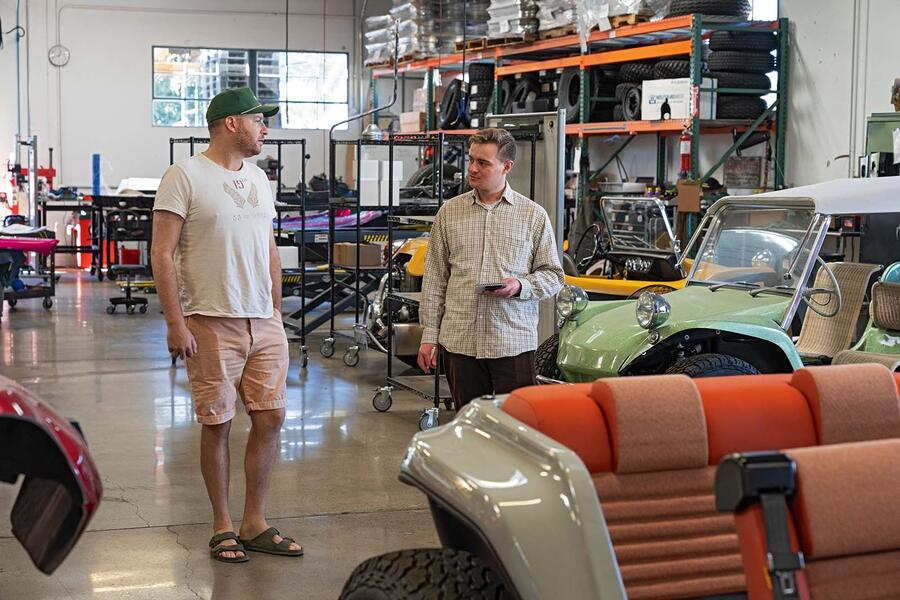
He says “Manx is basically the Switzerland of car companiesâ€, pointing to the huge variety of engines that have graced the rear end of Meyers’ buggies over the years: Chevrolet Corvair, Porsche 911, a Ford industrial motor and even a three-cylinder radial engine (available now for $30,000) that looks like it’s been nicked from a Sopwith Camel.
Effectively, the Manx’s long association with Volkswagen power is merely a by-product of its cost-effective Beetle-derived underpinnings and the swap to EV power is not expected to particularly rile any of the loyalists.
Manxes are driven purely for fun, usually at low speed, in crowded environments and for short distances, so the reduced noise and emissions that come with electrification is more a gift than a curse, and damn the range anxiety: how long is the promenade in your local seaside town?
Clearly, the demand is there, given the first two years of production are spoken for already, with more than 2000 deposits taken.
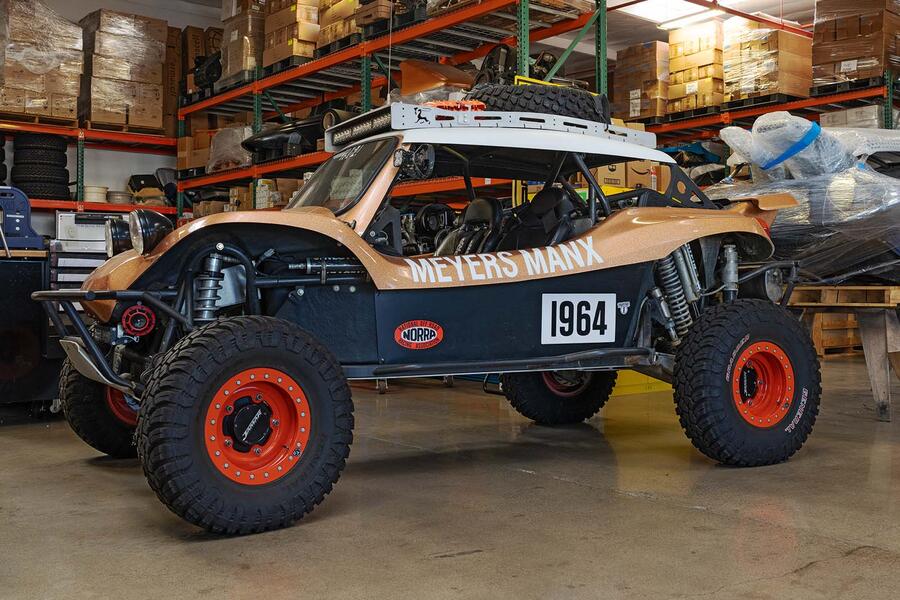
Plus, hints Potiker, the inherent characteristics of an EV powertrain could even be a boon in the context of its dune-bashing credentials, with the company planning to compete at Baja with the 2.0 “when the time strikesâ€.
But the immediate focus for Meyers is on preserving and safeguarding the bread-and-butter kit car business, making the combustion cars easier to assemble at home and amassing a stockpile of the necessary mechanicals and structural components to cater to sustained demand from customers old and new.
Potiker, keen for us to experience for ourselves the unique joys of Manx motoring, offers us a spin in the company’s heavily patinated and intimidatingly modified demo car – still bearing the grime from a recent return trip to Baja, where it was pressed into full-bore off-road duties for a new promotional film.
“You’ve got a Beetle, haven’t you? You’ll be fine.†He chucks me the keys. I quickly scan the ‘interior’ for similarities to my own (comparatively opulent) 1972 Bug and come up short.
But it drives… like a Beetle. Such was the utilitarian, cost-effective billing of the original Type 1 that its tinny shell offers precious little isolation from the elements in any case, so removing the doors, windows and roof makes less difference here than it would for, say, a Rolls-Royce.
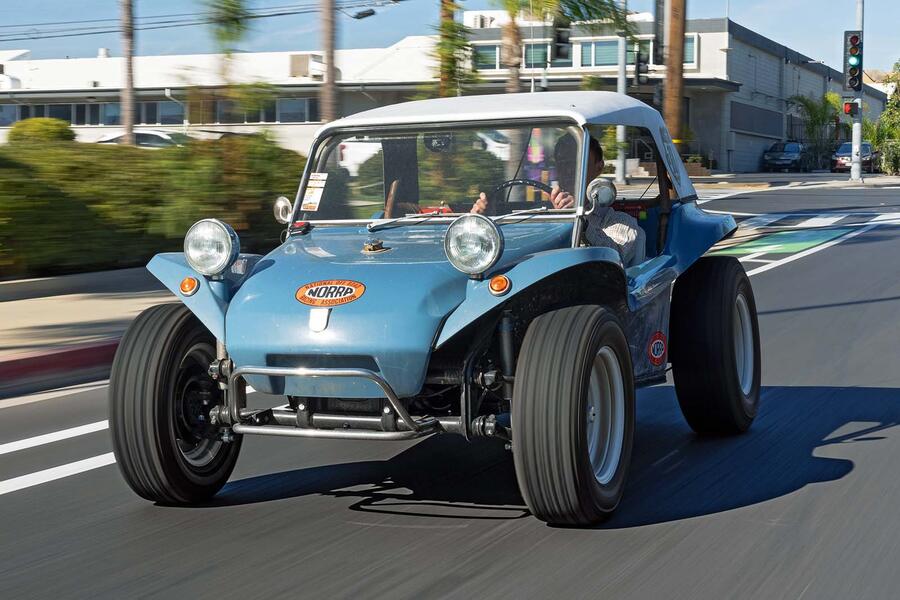
That doesn’t mean I’m any less perturbed when I find myself idling next to a GMC Yukon at the first set of lights we come to, my scalp level with its wheel arches and no doubt entirely invisible to its driver. These things were designed with consideration for little other than off-road merriment and the trade-off is obvious, to say the least.
Nonetheless, its fettled flat four is entirely untroubled by the task of heaving around less than 700kg of Bug bits and glassfibre, the steering is light but reassuringly engaging and the pedals are more responsive to inputs than you might expect of a kit car that’s been haring around punishing desert tracks for the past 50 years.
It’s not long before we’re in full Meyers mode: hair whipped back by the California breeze, deafened by the engine and wearing a Cheshire cat grin that won’t fade for a good while after we get back into our boring old rental car, disappointingly conformist as it is with its airbags, radio and power steering.
As we leave the Meyers team to crack on with a meeting in their suitably outlandish Timothy Oulton capsule, modelled on the original Apollo spaceship (seriously), we’re struck by a profound sense of gratitude that this hedonistic and carefree enterprise has a new steward that appreciates its core attributes and is committed to preserving them while adapting the brand for a bold new era.
The world will always need cars like this: utterly pointless on the face of it, but absolutely impossible to drive while in a bad mood.
